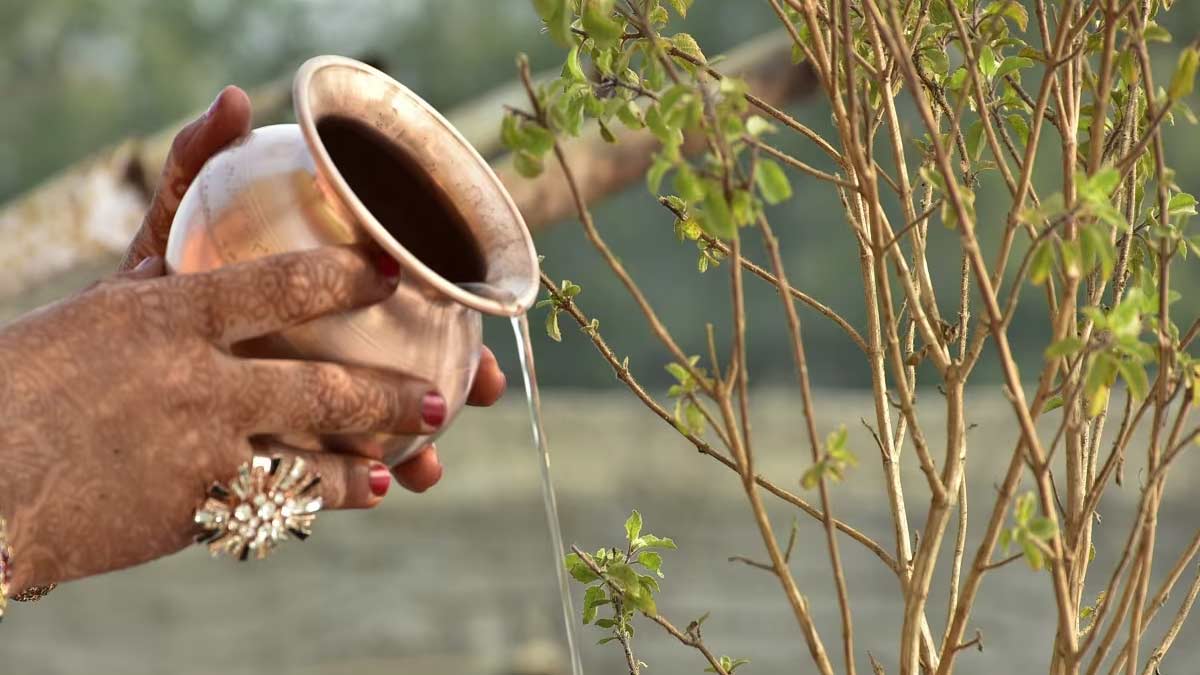-1726834074032.webp)
How To Care For Your Tulsi Plant At Home: Essential Tips
Are you looking to nurture a healthy and vibrant Tulsi plant in your home? Known for its aromatic leaves and significant cultural importance, Tulsi (Ocimum sanctum), or holy basil, is a beloved herb in many Indian households. According to a study by National Institutes of Health (NIH), “Tulsi has been found to protect organs and tissues against chemical stress from industrial pollutants and heavy metals, and physical stress from prolonged physical exertion, ischemia, physical restraint and exposure to cold and excessive noise.” Caring for a Tulsi plant can be rewarding, both for its spiritual significance and its culinary uses. We got in touch with Ramesh, a local gardener from Ghaziabad who told us some easy Tulsi plant care tips. Take a look at these easy tips to care for your Tulsi plant:
6 Tips To Care For Your Tulsi Plant At Home
1. Choosing The Right Location
-1726834563802.jpg)
Tulsi thrives in warm, sunny environments, so select a spot that receives at least six to eight hours of direct sunlight each day. Ensure the area is protected from strong winds, as Tulsi plants can be sensitive to harsh weather conditions.
2. Soil Requirements
The ideal soil for a Tulsi plant is well-draining, loamy soil, and slightly acidic to neutral (pH 6.0 to 7.0). A mixture of potting soil, compost, and perlite can create a conducive environment for growth. According to Voice of Plant, “A mix of garden soil and compost works well. Make sure the soil is not too compacted”. If planting in the ground, ensure the soil has good drainage to prevent waterlogging.
3. Watering Tulsi Plant

Tulsi prefers consistently moist soil but not waterlogged conditions. Water the plant when the top inch of soil feels dry, but during the summer, ensure the soil stays slightly moist. During the winter season, reduce watering to avoid disease. Overwatering can cause the leaves of the Tulsi plant to change colour. Always ensure excess water can drain away to avoid root rot.
4. Fertilisation
To promote healthy growth, fertilise your Tulsi plant every 4-6 weeks during the growing season. Make sure to use a balanced, organic fertiliser or homemade compost. Be cautious not to over-fertilise, as this can lead to excessive leaf growth at the expense of flavour and aroma.
Don't miss: How To Take Care Of A Jade Plant: Simple Tips For A Lush And Vibrant Plant
5. Pruning
-1726834577034.jpg)
Regular pruning helps maintain a bushy shape and encourages new growth. When the plant reaches about 6 inches tall, pinch off the tips to promote branching. Pinch off yellow or dying leaves to help the plant focus on growing new green ones. You can prune Tulsi anytime, but never cut more than half of the plant. Remove any buds to encourage a fuller, bushier growth, as per The Spruce report. Always leave enough foliage on the plant to ensure continued growth.
Don't miss: How To Make Natural Fertilisers For Potted Plants: Simple DIY Solutions
6. Pest Management
Holy basil rarely suffers from major pests or diseases. But if you notice pests, treat them promptly with a gentle spray of water or an organic insecticidal soap. neem-based fertiliser is another effective natural remedy for pest control. Also if you notice any yellowing leaves or unusual spots, remove the affected parts immediately to prevent the spread of the disease.
For more such stories, stay tuned to HerZindagi.
Image credit: Freepik
Also watch this video
Herzindagi video